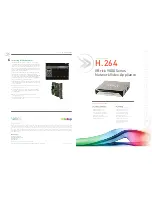
1-3
1.3 Transportation
• When carrying an inverter, always support its bottom at the right and left sides with both hands. Do
not hold covers or individual parts only.
• Avoid applying excessively strong force to the terminal block covers as they are made of plastic
and are easily broken.
1.4 Storage
Environment
1.4.1 Temporary
storage
Store the inverter in an environment that satisfies the requirements listed in Table 1.1.
Table 1.1 Environmental Requirements for Storage and Transportation
Item Requirements
Storage temperature *
1
-25 to +70
°
C
Relative humidity
5 to 95%
*
2
A location where the inverter is not subject to abrupt changes
in temperature that would result in the formation of
condensation or ice.
Atmosphere
The inverter must not be exposed to dust, direct sunlight, corrosive or
flammable gases, oil mist, vapor, water drops or vibration. The atmosphere
must contain only a low level of salt. (0.01 mg/cm
2
or less per year)
86 to 106 kPa (in storage)
Atmospheric pressure
70 to 106 kPa (during transportation)
*
1
Assuming a comparatively short storage period (e.g., during transportation or the like).
*
2
Even if the humidity is within the specified requirements, avoid such places where the inverter will be
subjected to sudden changes in temperature that will cause condensation to form.
Precautions for temporary storage
(1) Do not leave the inverter directly on the floor.
(2) If the environment does not satisfy the specified requirements, wrap the inverter in an airtight
vinyl sheet or the like for storage.
(3) If the inverter is to be stored in an environment with a high level of humidity, put a drying agent
(such as silica gel) in the airtight package described in item (2).
1.4.2 Long-term
storage
The long-term storage methods for the inverter vary largely according to the environment of the
storage site. General storage methods are described below.
(1) The storage site must satisfy the requirements specified for temporary storage.
However, for storage exceeding three months, the ambient temperature should be within the
range from -10 to +30 °C. This is to prevent the electrolytic capacitors in the inverter from
deteriorating.
(2) The inverter must be stored in a package that is airtight to protect it from moisture. Include a
drying agent inside the package to maintain the relative humidity inside the package within 70%.
(3) If the inverter has been installed in the equipment or control panel at a construction site where it
may be subjected to humidity, dust or dirt, then remove the inverter and store it in a suitable
environment specified in Table 1.1.
Precautions for storage over 1 year
If the inverter will not be powered on for a long time, the property of the electrolytic capacitors may
deteriorate. Power the inverters on once a year and keep them on for 30 to 60 minutes. Do not
connect the inverter to a motor or run the motor.
Summary of Contents for FRENIC-Multi series
Page 194: ...MEMO MEMO...
















































